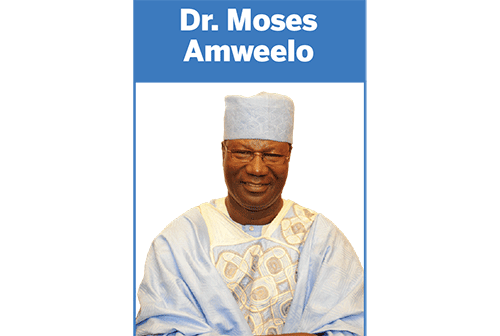On 8 September 2023 at around 22.11 UTC, a powerful earthquake of magnitude 6.8 struck Morocco at 18.5 km depth. The epicentre was in the High Atlas Mountains, 71 km south-west of Marrakesh, which has a population of 840,000 inhabitants and is the most impacted city. According to media, several houses have collapsed and other buildings were reported with structural damage.
CNN stated that rescuers are searching through rubble, and trying to reach isolated communities after this devastating earthquake, which killed thousands and left more injured or unaccounted for. The quake is the strongest to hit the nation’s centre in more than a century, and its epicentre was not far from popular tourist and economic hub Marrakech.
Its impact was felt far and wide, reaching as far north as Casablanca, but it most severely damaged towns and villages near the base of the Atlas Mountains. Morocco has suffered earthquakes in the past, but few in its history have been so powerful. This quake is Morocco’s deadliest since 1960, when an earthquake killed more than 12,000 people. Earthquakes of this size in the region are uncommon, according to the US Geological survey, but not unexpected.
It noted that nine quakes with a magnitude of 5 or higher have hit the area since 1900, but none of them have had a magnitude higher than six. Nearly 1,500 people have died in the province of Al Haouz, where the quake was most devastating. Nevertheless, the region, like many other badly-affected locations, lies south of Morocco at the foot of the Atlas Mountains, and includes remote villages and settlements that have been difficult for rescuers to reach. Eyewitnesses in the foothills of the mountains said some towns are completely destroyed, with almost all the homes in an area of the village of Asni damaged. Why was the quake so deadly? Multiple factors have contributed, according to seismologists and disaster risk-reduction specialists. The first was magnitude. At 6.8, the earthquake was not huge.
The one which devastated parts of Turkey and Syria in February, for example, was magnitude 7.8, but it was unusually large for Morocco. Northern Africa is moderately seismically active.
Tremors are caused by the ongoing collision of the African and Eurasian tectonic plates. “The collision explains the seismicity from Turkey to Gibraltar,” says Bossu. Both are continental plates, adds Ziggy Lubkowski, associate director of seismic design at the engineering consultancy Arup in London.
The collision has forced rock upwards, creating the Atlas Mountains in the region, where Friday’s quake happened. “It’s a rather complex, old collision.” Maximum magnitude unknown: because the region is only
moderately active, really big earthquakes are rare, happening only once every few hundred years. Unfortunately, seismological records do not go back far enough to say how big earthquakes in this region can get, says Bossu. ‘’It is challenging to evaluate the maximum magnitude, especially in moderate-seismicity environments, because our observations are far too short.” A further complication is the nature of the plate boundary. In some regions, such as Turkey, there is a single clear boundary. But in northern Africa, there is ‘’a network of faults in a much larger area’’, says Bossu. Instead of a localised region with a high risk of tremors, a large area has a low but still significant risk.
However, the biggest contributor to the disaster has been lack of preparedness, says disaster researcher Ilan Kelman at
University College London. “Earthquakes don’t kill people; collapsing infrastructure does,’’ he says. “This was so devastating simply because people were not ready for it.” Even moderate earthquakes can be lethal if societies are not prepared, says Kelman.
He highlights the magnitude 5.9 quake which struck Agadir in Morocco on 29 February 1960. About one-third of the city’s population was killed and another third injured, mostly by collapsing buildings. Although this was not a huge tremor, the United States of America’s Geological Survey calls it “the most destructive ‘moderate’ quake (magnitude less than 6) in the 20th century’’.
Buildings in Morocco are often designed to control for extremes of temperature, which are an ever-present risk, whereas earthquake resilience has taken a back seat, in part because they are rarer, says Kelman. However, in some other regions, traditional building materials such as masonry or
adobe have been successfully adapted to be earthquake- resilient. “We know we can do it,” he says.
The big question is: how to help Morocco earthquake victims?
Here are some ways to help.
The International Medical Corps is in communication with the World Health Organisation and other partners to provide medical and other assistance to Morocco’s earthquake survivors in devastating communities. High Atlas Foundation (HAF), founded in 2000, is providing immediate assistance such as food, shelter and clean drinking water. They are also distributing non-perishable food items and blankets.
The International Federation of the Red Cross (IFRC) and the Moroccan Red Crescent are providing rescue assistance, first aid and psychological support to quake victims.
CARE is an organisation that has been working in Morocco since
2008 to help youth and disadvantaged groups in rural areas with access to basic public services.
They prioritise women and girls, the elderly, families with young children, and anyone unable to access other emergency services. World Central Kitchen (WCK), The United Nations Children’s Fund (UNICEF), and Global Giving’s Morocco Earthquake Relief Fund has raised more than US$500,000 to provide shelter, medicine, mental health support and other essential supplies to address the immediate needs of earthquake victims.
* Dr Moses Amweelo is a former minister of works, transport and communication. He earned a doctorate in Technical Science, Industrial Engineering and Management from the International Transport Academy (St Petersburg, Russia).


